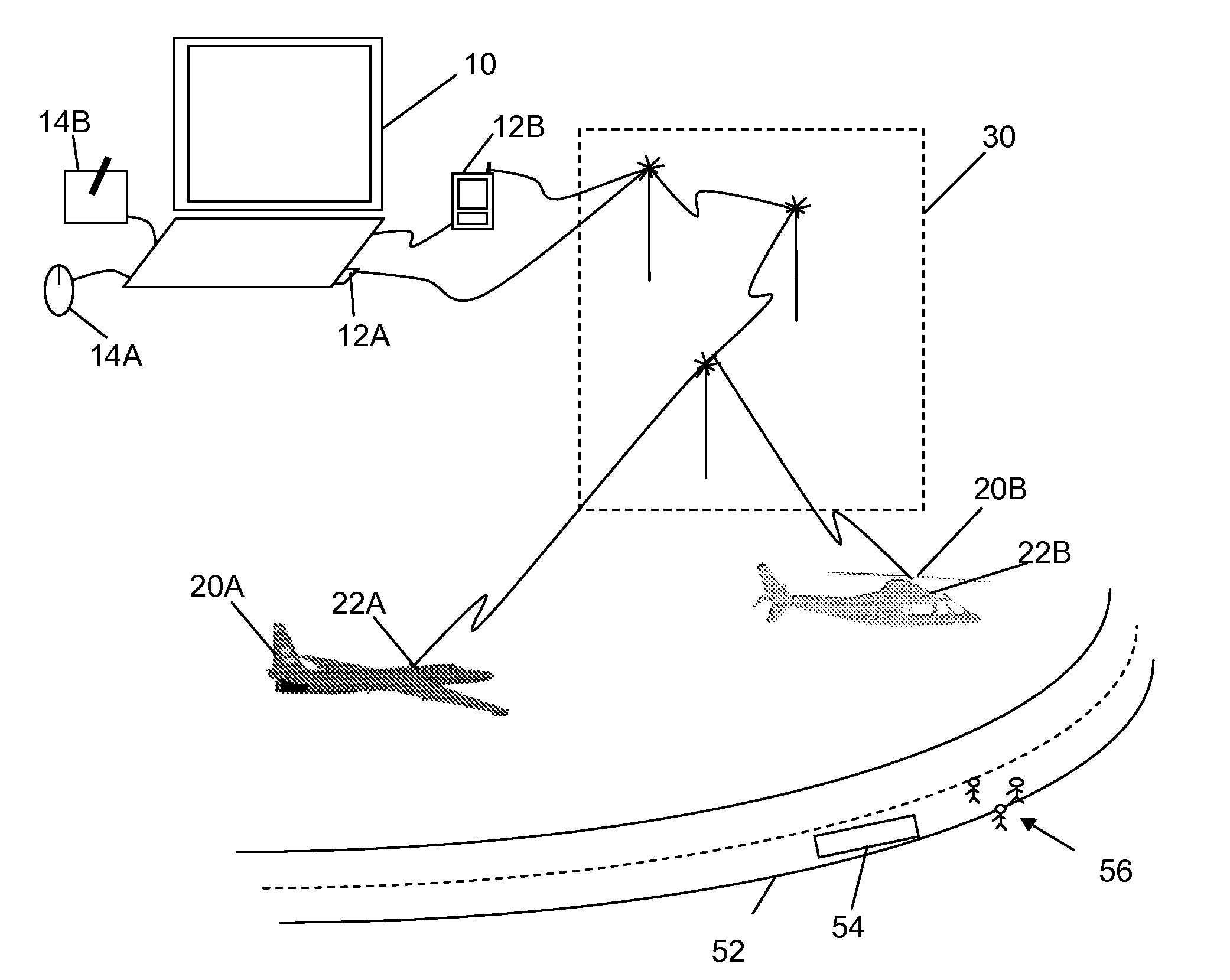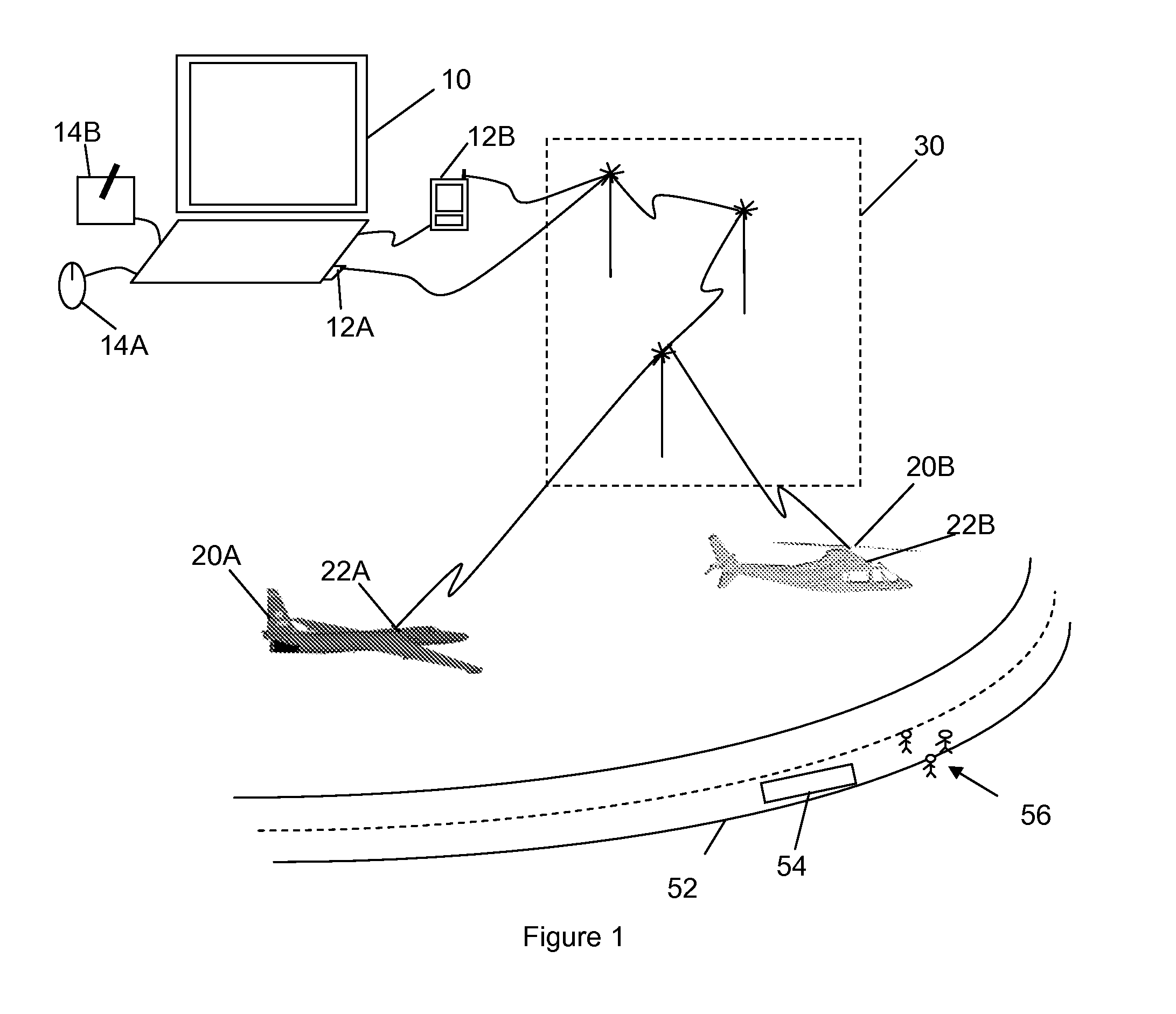Cellular Control of Airborne Equipment
a technology of airborne equipment and cellular control, applied in the field of aerial surveillance, can solve the problems of tfo's workload being overwhelming, compromising his ability to convey, and handicapping tfo's ability to quickly convey his observations to ground units,
- Summary
- Abstract
- Description
- Claims
- Application Information
AI Technical Summary
Benefits of technology
Problems solved by technology
Method used
Image
Examples
Embodiment Construction
[0016]The present invention uses commercial cellular phone and cellular wide-band data networks to exchange bi-directional digital data with aircraft, and provides for Internet distribution of this data. Some of the information downlinked from the aircraft may include video imagery acquired by sensors integrated with the aircraft. In addition, some of the information uplinked to the aircraft may include instructions to control equipment onboard the aircraft, including cameras, spotlights, and public-address systems. Though present-day commercial cellular networks are inadequate for downlinking uncompressed high-quality video in real time, commercial cellular technology and deployed infrastructures are still evolving rapidly, and within a few years it is likely that most metropolitan areas will have sufficient deployed commercial infrastructure to allow good-quality real-time video distribution, at least when incorporated with advanced data compression technology.
[0017]The invention ...
PUM
 Login to View More
Login to View More Abstract
Description
Claims
Application Information
 Login to View More
Login to View More - R&D
- Intellectual Property
- Life Sciences
- Materials
- Tech Scout
- Unparalleled Data Quality
- Higher Quality Content
- 60% Fewer Hallucinations
Browse by: Latest US Patents, China's latest patents, Technical Efficacy Thesaurus, Application Domain, Technology Topic, Popular Technical Reports.
© 2025 PatSnap. All rights reserved.Legal|Privacy policy|Modern Slavery Act Transparency Statement|Sitemap|About US| Contact US: help@patsnap.com


